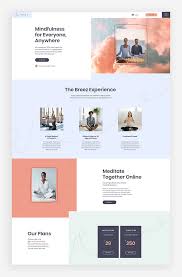
A website layout is an important factor in determining the success of a website. It can be the difference between a user staying on the page or leaving quickly. A well-designed layout should be easy to navigate, visually appealing, and should provide clear information about the website’s purpose and content.
When designing a website layout, it is important to consider the user experience. The layout should be organized in a way that makes it easy for users to find what they are looking for. Navigation should be intuitive and consistent throughout the website, with menus and links clearly marked. Additionally, images and videos should be used sparingly to avoid overwhelming visitors with too much information at once.
It is also important to keep in mind that different devices require different layouts. Responsive design ensures that your website looks good on any device by automatically adjusting the layout depending on screen size. This helps ensure that users have a consistent experience regardless of their device.
Finally, aesthetics are an important factor when designing a website layout. Colors and fonts should be chosen carefully to create an attractive look that reflects the brand or message of the site. Additionally, white space should be used strategically to create balance and focus attention on certain elements of the page.
In conclusion, designing a successful website layout requires careful consideration of user experience, device compatibility, and aesthetics. By taking these factors into account when creating a website, you can ensure that your visitors have an enjoyable experience navigating your site.
Which are the 4 most commonly asked questions about website layout?
- What are the best layout websites?
- What are the layouts of a website?
- What are the 4 main parts of any website layout?
- How do you layout a good website?
What are the best layout websites?
- Canva
- Squarespace
- Adobe Spark
- Visme
- Wix
- Weebly
- WordPress
- Layoutit!
- Bootstrap Builder
- MockFlow
What are the layouts of a website?
- Fixed Layout: A fixed layout has a set width and does not change regardless of the size of the user’s browser window.
- Fluid Layout: A fluid layout uses relative measurements such as percentages instead of absolute measurements like pixels, so that the layout can stretch or shrink to fit different browser window sizes.
- Responsive Layout: A responsive layout is a combination of both fixed and fluid layouts, where the design responds to different screen sizes and adjusts accordingly.
- Adaptive Layout: An adaptive layout is a type of responsive design that uses predetermined layouts for different screen sizes, so that the website looks different on different devices but still provides a good user experience.
What are the 4 main parts of any website layout?
- Header: This is typically the top portion of a website and usually contains the site logo, navigation, and other key elements.
- Content: This is the main area of a website and contains the actual content that visitors will read or interact with.
- Sidebar: This is an optional section of a website that can contain additional navigation, links, or other content related to the main page content.
- Footer: The footer typically appears at the bottom of a website and contains copyright information, contact details, legal notices, and other important information about the site.
How do you layout a good website?
- Start with a Plan: Before you begin designing your website, it’s important to have a plan in place. Decide what the purpose of the website is and set goals for what you want to achieve.
- Choose a Design: Select a design that best fits your needs and the message you want to convey. Consider the style, color scheme, font size and overall look of the site.
- Add Content: Make sure your content is well-written, relevant and engaging. Include images, videos or other forms of media to make it more appealing to visitors.
- Optimize for Search Engines: Optimize your website for search engines by including keywords in titles and headings, adding meta tags and descriptions, submitting an XML sitemap, etc.
- Test Your Site: Test your website on different browsers and devices to ensure that it looks good and functions properly on all platforms.
- Launch Your Site: Once everything is ready, launch your website! Make sure you promote it through social media channels or other marketing efforts so that people can find it easily online.
